Cette publication est également disponible en :
![]() Français
Français
When your nose tingles with the scent of anise notes, your ears almost seem to hum with the sound of the cicadas and the singsong accent of the south. As evocative as they are divisive, anise notes encompass a variety of ingredients. An overview of their olfactory interpretations, as seen through the eyes of Caroline Dumur (IFF) and Ilias Ermenidis (Firmenich).
Green anise and a glass of pastis
Anise, or aniseed, whose scientific name is Pimpinella anisum, is a herbaceous plant in the Apiaceae family, along with carrot, galbanum, dill, lovage, parsley, cumin, caraway, celery, fennel, coriander and angelica. Reaching a height of about 60 cm when fully grown, it is known for its striped, green seeds, produced by yellow flowers grouped in umbels. It likes sun and warmth. Probably originating in the eastern Mediterranean basin and Asia Minor, it has been used for its medicinal properties and in religious rituals since antiquity, and is one of the only spices produced in the West. It is also highly prized in food, as Pliny the Elder reports: “Both green and dried, it is held in high repute, as an ingredient in all seasonings and sauces, and we find it placed beneath the under-crust of bread. Pat with bitter-almonds into the cloth strainers for filtering wine, it imparts an agreeable flavour to the wine.”[1]Pliny the Elder, Natural History, Book XX.
And alcohol is the sphere where it has been most widely used, as Ilias Ermenidis, senior perfumer at Firmenich and the creator of Ege for Nishane (see below), reminds us: “Every country around the Mediterranean has its own speciality: ouzo in Greece, raki in Turkey, pastis in France, arak in Syria, sambuca in Italy, ori in Armenia, and so on. As a Greek born in Constantinople, I enjoyed drinking it with my father during our sailing trips on the Bosphorus.” This popularity can be explained by its sweetness: one of its main constituents, alongside estragol and anisic aldehyde, is anethol, which has five times the sweetening power of sucrose (and is also responsible for the white colour of pastis, due to its low solubility in water). Flavigny anise, which coats the seed with a layer of sugar, was one of the first French sweets, invented by Benedictine monks in 719.
Botanical varieties and molecular convergences
In spirits, however, there is now a tendency to replace aniseed with star anise, Illicium verum, whose essential oil has a very similar chemical composition. Botanically and historically, however, the two are very different: the Illicium verum tree, which belongs to the Schisandraceae family, is an evergreen tree with smooth green leaves and large, solitary yellowish flowers. The fruit, which is star-shaped with an average of eight branches, is dried before being used. The tree originated in southern China and thrives in mild climates. It was not introduced into Europe until the 17th century and long remained very expensive, a trend that has only recently been reversed.
Anise is more closely related to fennel, which is also a member of the Apiaceae family. A native of the Mediterranean, Foeniculum officinale or vulgare has been appreciated since ancient times, with all its parts being used for their medicinal and flavour properties. An essential oil is extracted from its seeds. The oil is rich in anethol and estragol and, in lesser quantities, limonene and fenchone, one of the components of absinthe, which explains why it is associated with anise notes.
One note, a variety of possibilities
The aniseed note in perfumery is not confined to anise alone: “I divide it into three categories: aromatic anise notes, including aniseed, star anise, fennel, tarragon and basil; the more liquorice notes; and floral anise notes, such as mimosa and heliotrope,” explains Ilias Ermenidis.
Plenty of ingredients are available to build the notes, each with their own characteristics, as IFF perfumer Caroline Dumur, who composed Rayon vert for Bastille (see below), points out: “For example, LMR Genovese basil has a definite floral aspect, which can be found in heliotrope and hawthorn. Caraway, which is more minty and cumin-like, has a real velvety dimension that softens the anise notes; fenugreek, immortelle and celery warm them up. There is also absinthe and armoise which I like a lot; they’re harder and darker, evoking a very dark green. We also have synthetic molecules like anethol. Estragol used to be a classic, but we can’t really use it anymore because of restrictions. I also find anise facets in lily of the valley notes. Ilias Ermenidis adds: “You can also use anisic aldehyde, anisyl acetate, or tarragol with parsley facets. I really liked Basilex, a Firmenich captive from the 1980s and 1990s, which is gorgeous and very mineral. But it’s no longer available. On the other hand, we have a really lovely Nature Print essence of basil leaves [obtained using the Headspace technique].”
A hidden treasure
But briefs that place anise at the centre of the composition remain rare: these notes are used as facets rather than as a central theme, as Caroline Dumur confirms: “Certain materials with anise facets are used for a fresh and aromatic opening, particularly in masculine fragrances; tarragon and basil, which are rich in estragol, are two examples. Anise facets are also found in mimosa notes, such as Après l’ondée. But generally, they don’t get much press: they almost instantly suggest food and drink – and nobody wants to smell pastis – or signatures that are too retro. However, I feel there’s something worth exploring, these are notes that immediately make the mouth water and that have quite a wide sweep, between the colder notes – pastis – and the warmer ones of fennel, immortelle absolute and liquorice. This makes it possible to compose complex, legible greens, appreciated in niche perfumery, but which you need to know how to envelop it.”
We have to admit that the rare compositions to put it centre stage have not often lasted long on the market, and that drawing up the list (non-exhaustive, of course) of their names is pretty depressing. But maybe they were born too early for us to understand them?
Perfume sampling
They do have some noble predecessors in the history of perfumery: “I’m thinking in particular of the anise fougère Brut [Karl Mann, 1964], Eau sauvage [Edmond Roudnitska, 1966], with a hint of basil, and Azzaro [Gérard Anthony, 1978], which has anise and fennel facets as far as I’m concerned,” says Ilias Ermenidis. But it is above all Lolita Lempicka’s first perfume in 1997, created by Annick Menardo, which constitutes a “masterpiece, an archetype of the anise note in a liquorice version”, continues the perfumer. Its masculine counterpart, launched three years later, puts even more emphasis on anise and liquorice, harmonising beautifully. We can also cite Kenzo Air created by Maurice Roucel in 2003, which was unfortunately quickly discontinued. Another release the same year that fell by the wayside was Olivia Giacobetti’s L’Eau Ivre de Iunx, described as an “icy, guilty elixir” that Caroline Dumur considers “one of the most beautiful interpretations of the note, with its very direct anise, mixed with absinthe and immortelle.”
Also no longer in existence, Anice by the Italian brand Etro offered us a floral anise in 2004, underpinned by notes of “fennel and caraway and touches of jasmine and iris.” At the same time, L’Eau noire by Dior was released, composed by Francis Kurkdjian, which played on the gourmand and more aromatic aspects of liquorice. Difficult to find for a few years, it was re-released this year as part of the brand’s exclusive collection, now under the creative direction of the perfumer.
In 2006, Olivia Giacobetti returned to the accord with Fou d’absinthe for L’Artisan parfumeur, an interpretation of the green fairy “composed like an encounter between spicy freshness and woody warmth”, with star anise making an only natural guest appearance.
A series of liquorice-based fragrances then appeared: in 2006, Richard Fraysse used a liquorice absolute in L’Eau de réglisse from Caron to create a “fresh and tender eau de toilette, child of the surprising marriage between strawberry and woody notes,” but it is no longer available.
The following year it was Jean-Claude Ellena’s turn, offering us “a lively, sleek lavender enveloped in mat black liquorice” with Brin de réglisse from Hermès, a perfume that is still in the house’s catalogue.
In 2008, Guerlain came up with its own take on the root, an ephemeral and more sugary interpretation: Aqua Allegoria Laurier Réglisse, created by Jean-Paul Guerlain, Marie Salamagne and Sylvaine Delacourte.
New generation
A change of direction for changing times: eight years later, Jo Malone’s limited edition collection The Herb Garden featured one of the first compositions to incorporate fennel: Carrot Blossom & Fennel, composed by Anne Flipo, partnered the two notes in a more floral bouquet of orange blossom, rose and iris.
Another couple of years takes us to the launch of Papier Carbone by Ormaie in 2018, described as a “commemoration” of “school paper, wood in a library and the liquorice we loved as children.”
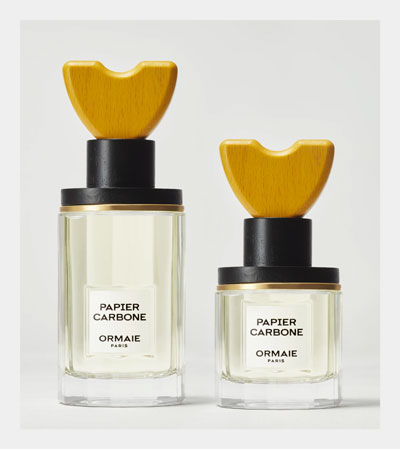
The releases started coming thick and fast after that: in 2020, Turkish brand Nishane launched Ege, a tribute to the Aegean Sea that lies between Greece and Turkey, linking the two countries. Ilias Ermenidis from Firmenich, who composed it, explains that he “combined the ozone note with green, anise – a reminder of the importance of an ingredient that also links the two countries – mentholated notes, combined with a violet leaf on a woody base. It was an unconventional interpretation, and it went on to become a best-seller for them.”

A year later, Mathieu Nardin from Mane created L’Heure verte for Kilian Paris, named after “the traditional Happy Hour, the ritual at the beginning of the evening when absinthe used to be served with a little sugar.” The brand highlighted the use of essence of absinthe, violet leaves, liquorice roots, patchouli, vetiver and sandalwood.

2022 saw Roos&Roos release Bel absinthe, a radically different version of the famous alcohol that found a home in Les Simples collection. Fabrice Pellegrin composed a “highly vegetal” interpretation, where an aromatic, minty sweetness with a generous helping of chamomile is balanced with more earthy base notes.
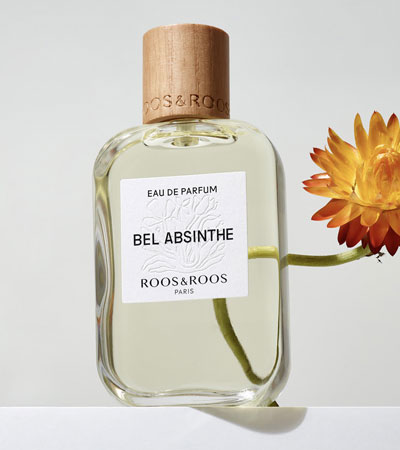
As for Absinthe from newcomer Headspace, the brainchild of the prolific Nicolas Chabot (having previously founded Le Galion, Aether and Corps volatils), it has plumped for a technique based on “capturing, analysing and recreating the air surrounding a living or inert object.” This is a more festive and nocturnal interpretation of the plant. Nicolas Beaulieau from IFF devised an “aromatic leather with the emphasis on absinthe, the plant that goes hand in hand with madness,” fused with narcissus and patchouli to conjure up “the abandonment of bodies rubbing against each other.”
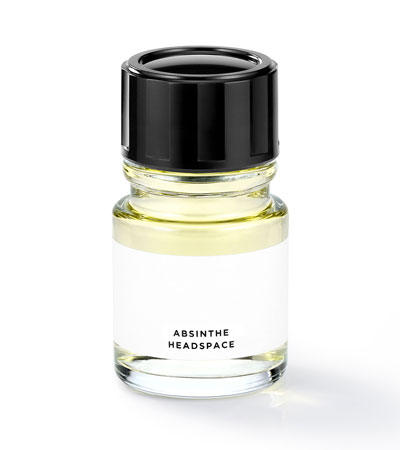
Amouage has also served up a dish of sombre anise notes with the recent Opus XIV Royal Tobacco, by Cécile Zarokian, a tribute to royal incense and tobacco absolute. Introduced by anise and basil, “the burnt molasses notes that characterise liquorice melt into the final notes of birch tar, vetiver and guaiac wood,” revealing an oud base.
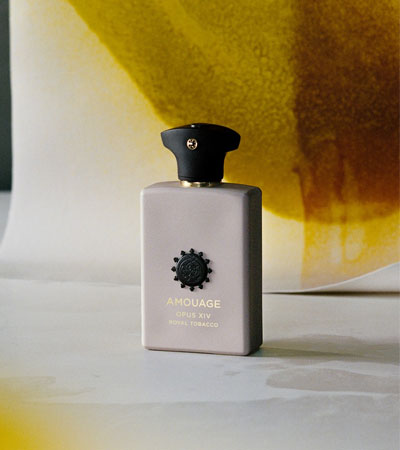
Rayon vert from Bastille, although it has an equally nocturnal feel to it, is far more luminous. Perfumer Caroline Dumur describes the original brief: “Our starting point was the image of glitter ball in a forest: I wanted to compose a luminous green, with an almost cologne-like opening. I used anise notes to shape it, make it shine, with traces of blackcurrant and citrus which add a sparkling facet, aldehydes, and pear notes to soften the whole composition.” The heart, more floral, is underpinned by “a gorgeous immortelle essence by LMR, an ingredient I really appreciate for its warmth, its suggestion of hot sand, salty and almost curry-like, which is far less present in the flower itself.” The perfumer also worked on the candle, where she “exaggerated the green notes that show up better in a candle than citrus notes. Compared to perfume, it’s a whole different ball game!”
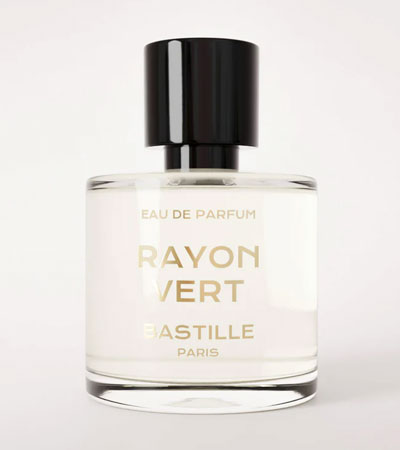
The latest creation from J’emme, which teams up each fragrance with a crystal placed in the bottle to transmit its “unique vibratory impact”, offers more of a floral interpretation of the note with Après l’aurore. Marie Schnirer, from independent laboratory Maelstrom, has created a beautifully sweet mimosa sprinkled with linden blossom, camomile, basil and anis, which “amplify the feeling of stillness, joy and well-being.”

Anise facets also appear alongside the sparkling citrus notes of Rital date, an oily perfume extract by Versatile which again called on the talents of the Flair studio. Amélie Bourgeois, Camille Chemardin and Elia Chiche devised a “neo-lemon”, gourmand and vegetal, evoking pesto as well as pistachio ice cream, with fennel an unmistakable presence.
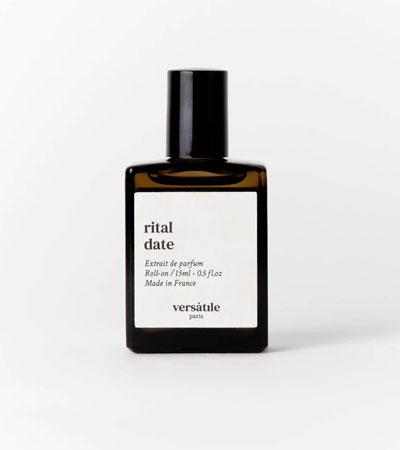
Fennel is again front of stage in Cédrat céruse from L’Artisan parfumeur’s collection that pays tribute to the kitchen garden. Quentin Bisch revived childhood memories with a “freshly picked fennel, sliced with a mandoline then seasoned with a few drops of lemon.” The plant’s essential oil is “flavoured with pink peppercorns and lemon as a top note” together with coriander and musks.

When it comes to mainstream fragrances, although the note is regularly mentioned, is often remains very discreet. For instance, Viktor&Rolf cites fennel for its latest release, Good Fortune, created by Anne Flipo and Nicolas Beaulieu and embodied by artist FKA twigs. More specifically, the press kit refers to a gentiane-fennel co-distillate, but if you think you’re likely to sniff it out, you may as well search for a needle in an ambery, vanilla-scented haystack. Just like previous launches that claimed to feature anise notes while drowning them in a sea of glucose. There was Very Irrésistible by Givenchy in 2003, “a faceted rose with five branches and spiked with star anise” which the brand, somewhat arrogantly, considered to be “the first aromatic floral in perfumery.” And then there were the two attempts by Diesel, in Fuel for Life pour homme in 2007, then Loverdose in 2011, where “the liquorice and star anise liqueur, symbol of passion and eroticism,” is supposedly a “unique and non-conformist association” (as always). We probably shouldn’t be surprised.
And tomorrow?
The popularity of anise notes this year is impossible to ignore. Is it driven by the need to gradually pull away from a simple gourmand and work on different notes, closer to “nature”? In this case, anise would seem to have almost the perfect profile, combining taste memories with more aromatic facets. However, according to the perfumers we spoke to, briefs that emphasise it are still few and far between. Let’s hope that this article could just possibly turn out to be a self-fulfilling prophecy. If it does, Caroline Dumur would love to “work with a more floral, feminine, but not necessarily powdery anise, and maybe envelop it in citrus.” As for Ilias Ermenidis, he would like to “combine anise notes with oud and create a Middle Eastern feel.”
Notes
| ↑1 | Pliny the Elder, Natural History, Book XX. |
|---|




Comments